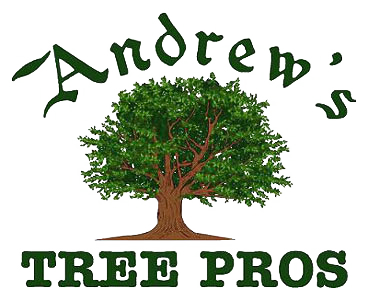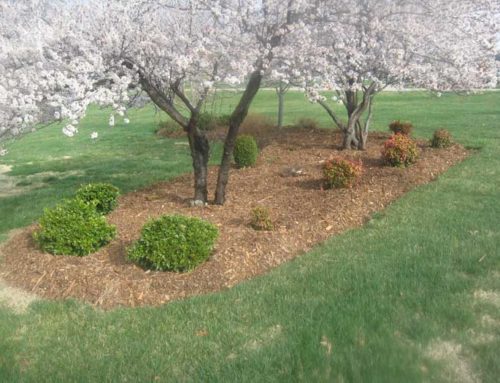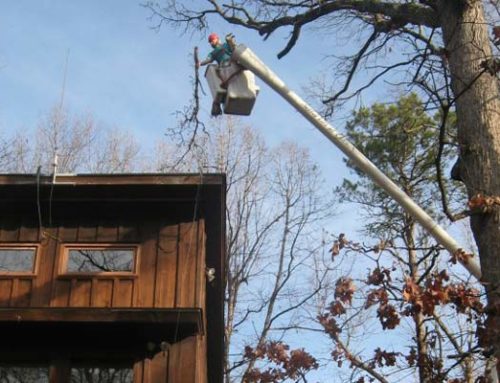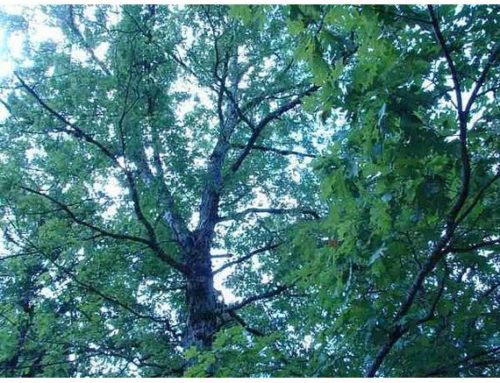The first step is to identify the drop path. How large of an area does the tree have to fall without damaging any other property. Also how many other tree, tree branches, or bushes may be damaged in the drop path. If space is limited and the tree can’t be dropped whole (with one cut at the bottom) then the tree must be topped. Topping is when upper sections of the tree are taken out first; maybe just the top or maybe multiple sections. Once the tree has reached a manageable height it is cut from the bottom, hopefully within the intended drop path.
Second, attach rigging rope to top third of the tree. A the trees are accessible by a vehicle then a Tree Service may use an aerial lift to tie rope to the top of the tree. Otherwise the tree will need to be climbed. If the tree is being topped, ropes will need to be attached to each section being removed. We recommend tying single or double bow-line knots for larger trees with a stopper for larger trees. Double braided or solid braided rigging ropes are available specifically for Tree Felling, just Google it.
Now you are ready to make your hinge. You’ll need a chain saw with a bar longer than the diameter of the tree. If not, you’ll have to make cuts from both sides and the back is much more risky. Cut an upside 7 with the chainsaw perpendicular to the drop path. Most STHLs and Huskys have a horizontal line above the trigger pointing in the direction of the drop path. Once the hinge is cut, tighten the rope in the direction of the drop path in preparation for the back-cut.
Now make the back-cut. The Back-Cut is a horizontal cut on the back side opposite the hinge, cutting at the same level as the bottom of hinge, stopping a few inches before cutting through the entire tree. The few inches remaining between the front and back of the tree is called the hinge. The hinge controls the direction the tree will fall. The back-cut should be level and parallel with the hinge or the tree may fall towards the left or the right. An experienced tree feller knows how much of a hinge to leave for different sizes and types of trees. If the tree is cut completely through, and the hinge severed, then the tree will fall in the direction its weight is leaning – this is the worst case scenario for Tree Felling.
And finally pull the tree over with the rope. The rope should be pulled in the direction of the drop path, usually once signaled by the Tree Cutter. If the rope is pulled to soon, it may snap. If the rope is not pulled, the Tree Cutter may cut the hinge thinner than necessary risking it snapping. After the tree falls the hinge should be left, perpendicular to the drop path.




